We feel like we could just kvel (beam with joy) as we announce the launch of Yiddish, the newest course available on Duolingo—and the 40th language we offer! Yiddish is spoken all around the world, and even if you've never heard of the language before, we bet you probably already know some Yiddish words. So grab your favorite thing to nosh on (maybe a bagel?) and let our team of Yiddish mavens present to you our spiel about why you should start learning Yiddish today.
Yiddish is as interesting historically and culturally as it is linguistically: it’s one of many languages spoken across the Jewish diaspora, and in its very vocabulary and grammar you can trace Ashkenazi Jewish communities' stories of immigration, survival, and adaptation. English speakers in North America have also been adopting Yiddish words and phrases for the last two centuries!
In this blog post, we'll be sharing the story of Yiddish, where and how it's spoken around the world, and what makes it such an interesting language for Jews, polyglots, and all language enthusiasts!
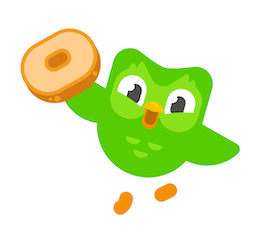
Yiddish, then and now
Yiddish has been spoken in Central and Eastern Europe for over a millennium, and today it’s used by some of the Ashkenazi Jewish diaspora across the globe. Yiddish isn't the language of all Jewish communities—there are dozens more, including Hebrew (spoken in Israel and all around the world for liturgical purposes) and Ladino (a language related to Spanish spoken by some of the Sephardic Jewish diaspora). Yiddish itself is specific to the linguistic and cultural history of the Ashkenazi community!
There were once as many as 13 million Yiddish speakers, but today this number is around 600,000. The Holocaust resulted in the deaths of millions of Yiddish speakers, and as speakers migrated both before and after World War II, many others assimilated and adopted the languages of the countries they lived in (like English in the U.S.).
Yiddish has a rich history of art, media, and entertainment, and Yiddish culture flourished between World War I and World War II in particular. Many of these treasures are still accessible to learners today! For example, did you know that in New York City, there was a thriving Yiddish theater scene similar to current-day Broadway? And in 1978, native Yiddish speaker and writer Isaac Bashevis Singer won the Nobel Prize in Literature--and delivered his acceptance speech in Yiddish! You can also find thousands of books originally published in Yiddish through the Yiddish Book Center.
 |
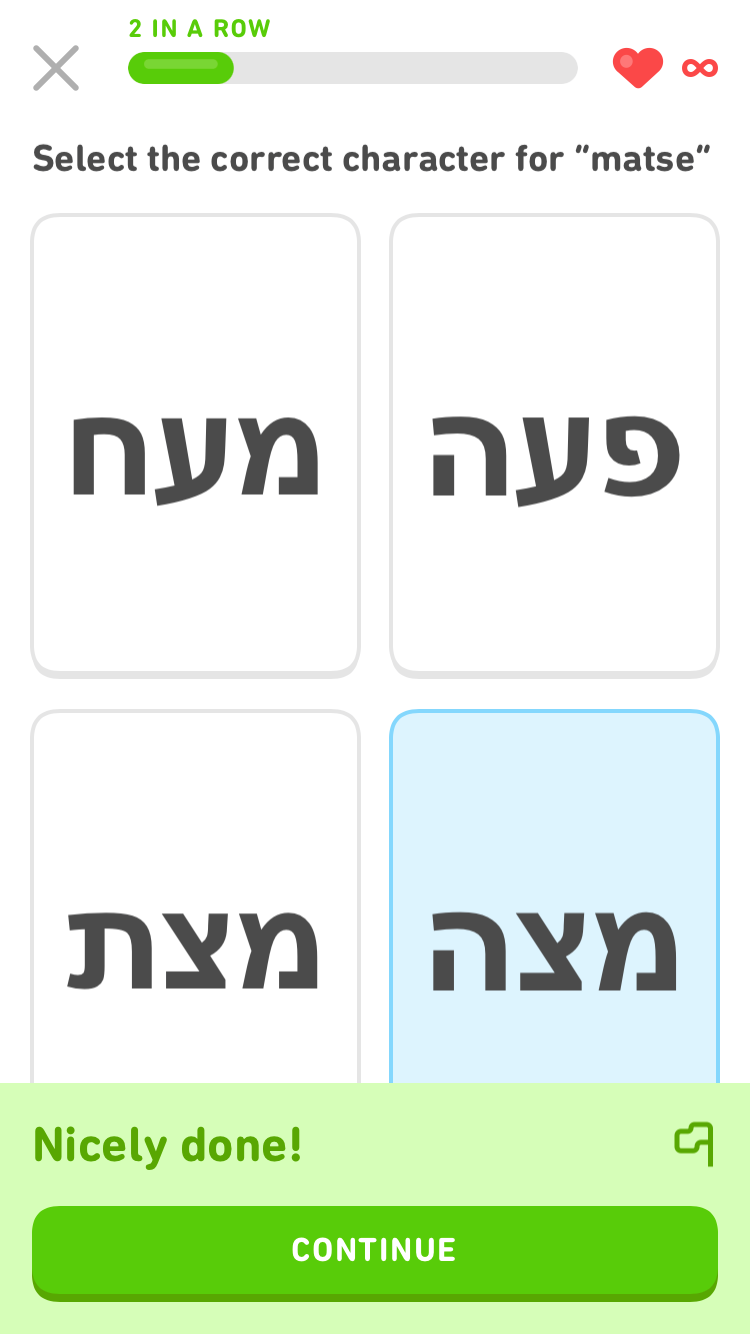 |
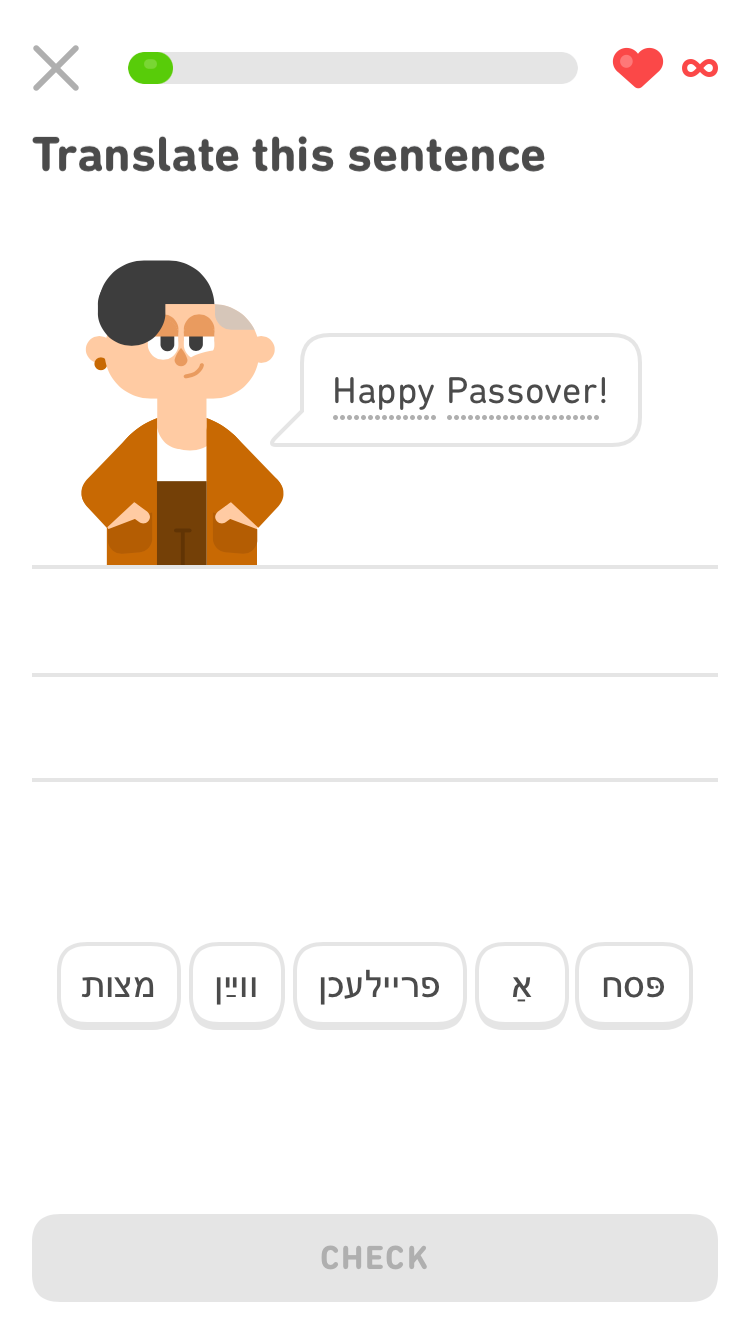 |
Yiddish, a world language
Our Yiddish course is designed to equip you with the language skills you'll need to participate in and learn from Yiddish-speaking communities: you'll be studying a vibrant, living language that you can use to tell a good joke as much as you can use it when chatting with a neighbor or reading a play.
Yiddish is a Germanic language (related to languages like English and German), but it's written with a modified version of the Hebrew script--so right away, you can see how this language reflects the history and culture of Ashkenazi Jews. For an English speaker, Yiddish might feel more like learning German in terms of vocabulary and grammar than something more different, like Hebrew or Arabic.
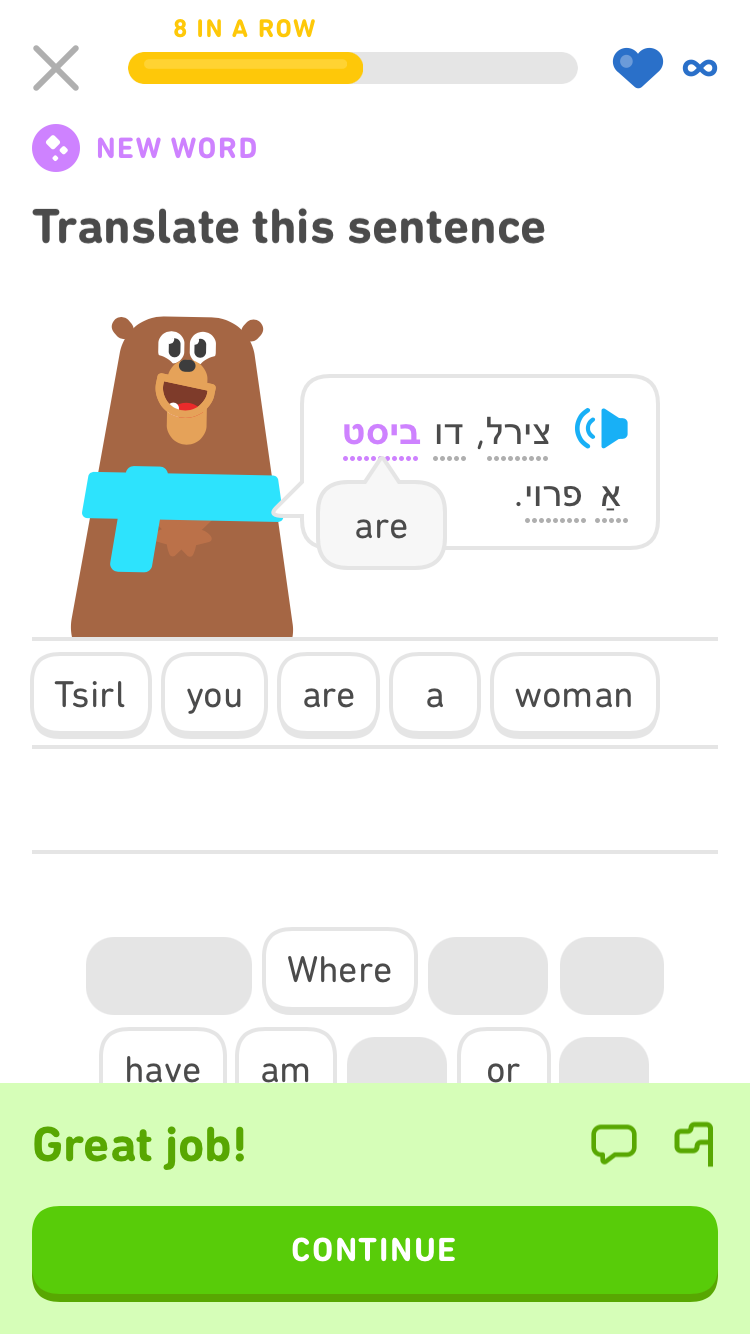 |
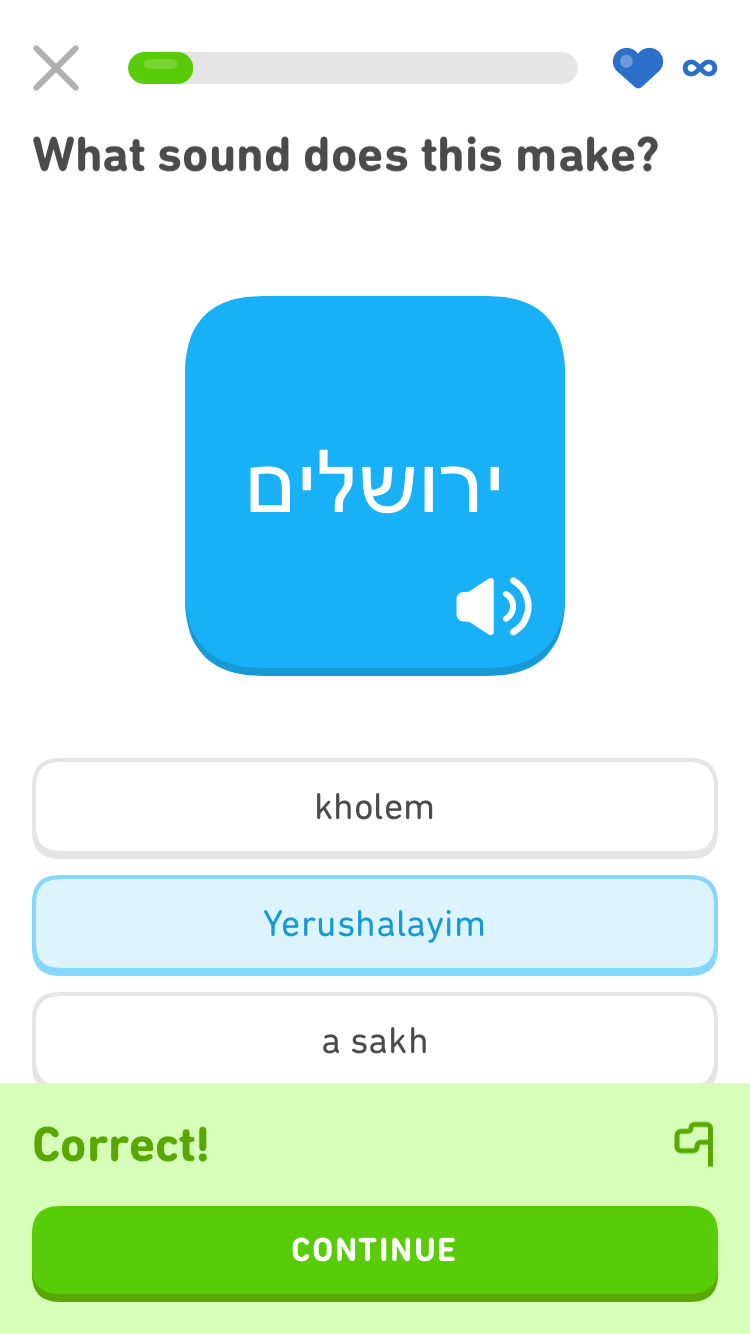 |
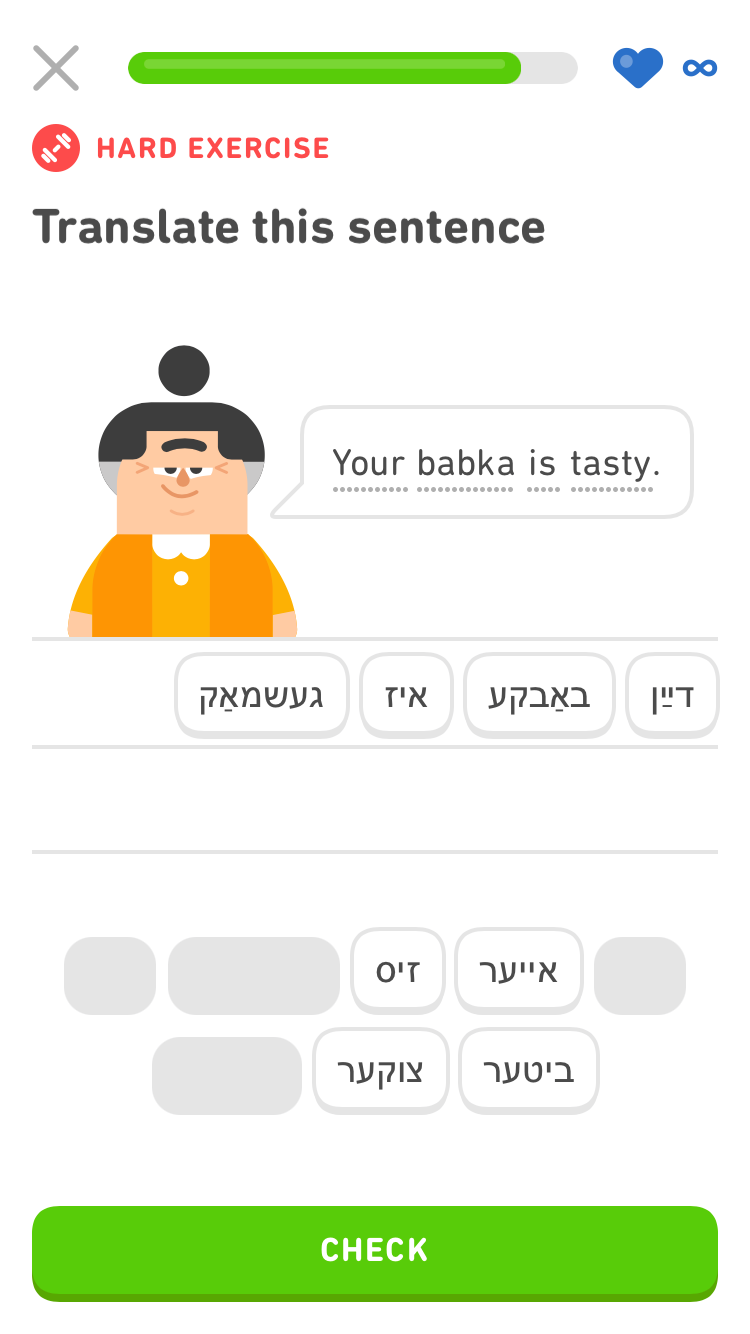 |
Yiddish is a reflection of the varied lives, countries, and cultures of Ashkenazi Jews over the centuries, and you can even see the influence of other languages on Yiddish vocabulary and phrases. Even today, this living language continues to evolve and adapt everywhere its speakers take it.
| Yiddish | What it means | What it might remind you of |
|---|---|---|
| ביבליאָטעק / bibliotek | library | French bibliothèque |
| אַפּטייק / apteyk | pharmacy | Russian and Polish apteka |
| קאַטשקע / kachke | duck | Polish kaczka |
| טשילאַר / chilar | chandelier | Hungarian csillár |
But other languages borrow from Yiddish, too! There are lots of ways that North American English especially has been influenced by Yiddish and Yiddish speakers:
- English has borrowed a lot of words from Yiddish. Did you notice the Yiddish words kveln, nosh, bagel, maven, and spiel above?
- Have you ever said Art, shmart! to mean something like "I don’t think highly of that painting"? That shm- (or sh-) comes from Yiddish! This pattern may have arisen from other Yiddish words that show disdain that include the sounds sh-/shm-, like shlemiel and shmendrik (both meaning foolish people).
- There's also a distinct American Jewish accent, which is heavily influenced by Yiddish speakers living in New York. It's a marker of cultural identity, even for Jews who aren't Yiddish speakers themselves!
Today Yiddish remains a diverse, evolving language with lots of accents, slang, and dialects spoken a little bit differently all around the world. The Yiddish grammar you'll be learning on Duolingo is based on the version standardized by the YIVO Institute for Jewish Research, and it has a lot in common with what you might find in a university Yiddish course. For pronunciation, the Duolingo course uses the Hasidic Hungarian accent because this is the variety learners are most likely to hear: it's probably the most widely spoken in the U.S. and around the world, and there are more monolingual speakers of Hasidic Hungarian than of the other Yiddish varieties. This combination of grammar, vocabulary, and pronunciation was chosen especially to give you a broad, solid foundation for all the Yiddish kibets (banter) you'll soon be exchanging with Yiddish speakers!
Bring the past to the present with Yiddish!
Today, Yiddish is an endangered language, but one that’s still alive and lively. You can immerse yourself in Yiddish's rich history, beautiful script, and interesting vocabulary by starting our Yiddish course today! Lernt gezunterheyt! (Happy studying!)
The Yiddish team would like to thank the League for Yiddish, who generously donated a free subscription to englishyiddishdictionary.org, and Yugntruf Youth for Yiddish.
